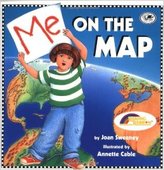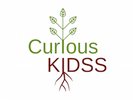 This series of activities can be used as an introduction to mapping for grades K-2. This series can be used as a stand-alone topic or as an introduction or extension to other activities. Students will use Me on the Map as an anchor text in order to create their own version of the book, using their school instead of their home. As you read, you can ask students for examples from their own homes, or from their school. Using the school as the setting may prevent students from feeling uncomfortable about sharing details concerning their homes, especially if students may not have a home to reference. Based on class needs, the book can be read as a whole class read-aloud, in small groups (with or without teacher guidance), or individually. The following activities can be done by first reading the book, then creating a list of features, then drawing the map. An alternative would be to read the book and create the feature list, and then draw all of the maps.
2 Comments
Me on the Map is a great book! My students love the pictures. We drew arial maps of our bedrooms. On another day, we used Google Earth to show the world view, then zoomed into see the continents (which is a difficult concept for little ones), countries, states, cities, then to our own school. We then had some time to look up a few student addresses. They were so into it that we extended that another day to include the rest of the class. (We found that 9 of the students didn't know their address, so this was a great practice for them to learn their address for the project.) Great ideas!
Reply
Abi K
11/5/2016 12:10:49 pm
Oops, I forgot to mention that I teach 2nd grade.
Reply
Leave a Reply. |

